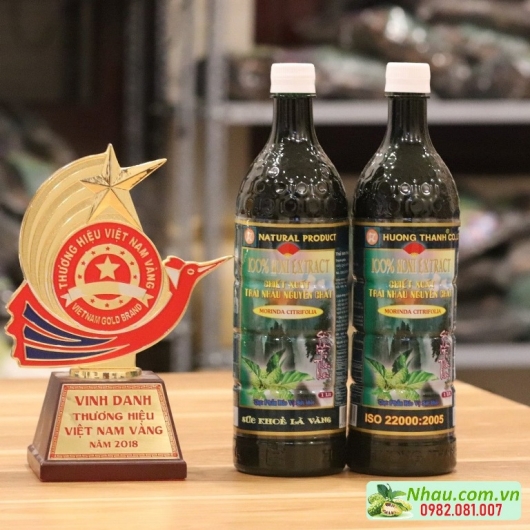 Nước cốt nhàu nguyên chất Hương Thanh - Hỗ trợ đau nhức xương khớp, huyết áp cao, tiểu đường, suy giãn tĩnh mạch ...
Nước cốt nhàu nguyên chất Hương Thanh - Hỗ trợ đau nhức xương khớp, huyết áp cao, tiểu đường, suy giãn tĩnh mạch ...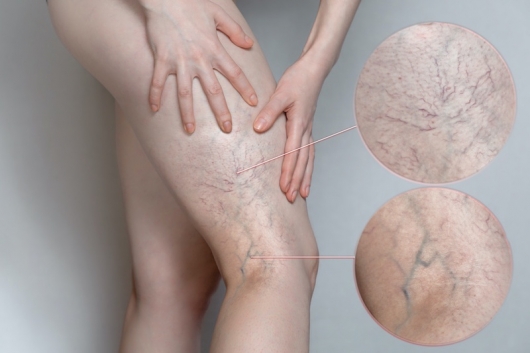 Trị suy giãn tĩnh mạch với bài thuốc từ trái nhàu (noni) hiệu quả ít tác dụng phụ
Trị suy giãn tĩnh mạch với bài thuốc từ trái nhàu (noni) hiệu quả ít tác dụng phụ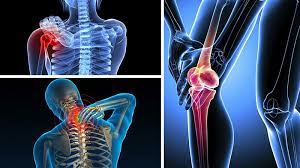 Tạm biệt cơn đau nhức xương khớp với Nước Cốt Nhàu Tự Nhiên Hương Thanh
Tạm biệt cơn đau nhức xương khớp với Nước Cốt Nhàu Tự Nhiên Hương Thanh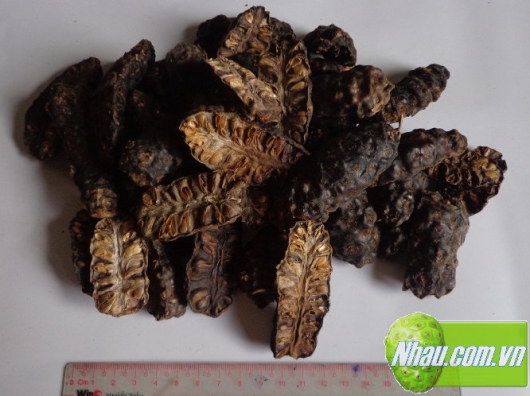 Trái nhàu khô - Công dụng của trái nhàu khô (noni fruit) với những căn bệnh mãn tính
Trái nhàu khô - Công dụng của trái nhàu khô (noni fruit) với những căn bệnh mãn tính Nước cốt nhàu Hương Thanh [1 thùng 10 chai] - Tiêu chuẩn ISO & Cúp vàng thương hiệu Việt 2018
Nước cốt nhàu Hương Thanh [1 thùng 10 chai] - Tiêu chuẩn ISO & Cúp vàng thương hiệu Việt 2018- + Xem thêm
- Khách đang online: 14
- Truy cập hôm nay: 113
- Lượt truy cập: 2482975
- Số trang xem: 2865472
- Tổng số danh mục: 40
- Tổng số sản phẩm: 46
NONI LEAF
NONI LEAF
Leaves of the noni tree are opposite or whorled, 3 per node, long or short-petiolate; blades ovate, broadly elliptic, oblong or oblanceolate, chartaceous or stiffly chartaceous; foliar pellucid glands absent; domatia sparse or dense tufts of hairs or absent. Inflorescence axillary or terminal, not frondose, globose, not subtended by bracts.
Heated leaves have been applied to the chest to relieve coughs, nausea, and colic in Malaysia. Juice from the leaves is used for arthritis in the Philippines.
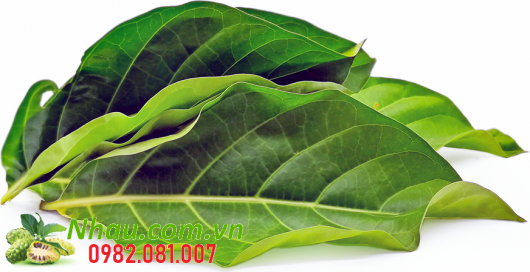
Traditional uses
In Tonga, natives have long used noni leaves to treat skin problems. Leaves are heated over the fire, ground and mixed with noni fruit, tiare flower, coconut, tamanu, and/or kukui nut oil.
In Tahiti these antioxidant rich leaves are dried out and used internally as a tea to treat a variety of discomforts and to aid in digestion. The leaves have been used in food preparation, such as wrapping fish to be cooked.
The noni leaf has been used for thousands of years in French Polynesian to treat a wide variety of ailments. These include arthritis, boils, bruises, colds, constipation, cough, cut, diabetes, diarrhea, dysuria, ear infections, elephantiasis, enlarged spleen, eye infections, fevers, fractures, gastric ulcers, gout, headaches, hemorrhoids, inflammation, itching, menstrual disorders, muscle aches, neuralgia, pain, pneumonia, rheumatism, ringworms, septicemia (blood poisoning), small pox, sores, sore throat, sprains, stomach aches, styes, tetanus, and thrush. The leaves were also used as a tonic, emollient, deodorant, and a purgative.
In the Marquesas Islands, the healing properties of the noni leaf were tied closely to the demonstration of bravado and manly virtue found in tattooing the bodies of men. Tattooing was so painful and dangerous that many died in the process. But those who survived used elements of the noni plant to assist in their recovery, and then offered noni to the gods in sacred ceremony.
Stories are told in Fiji of gravediggers eating noni leaves before going out to perform their tasks, and afterwards as a protection from evil spirits.



